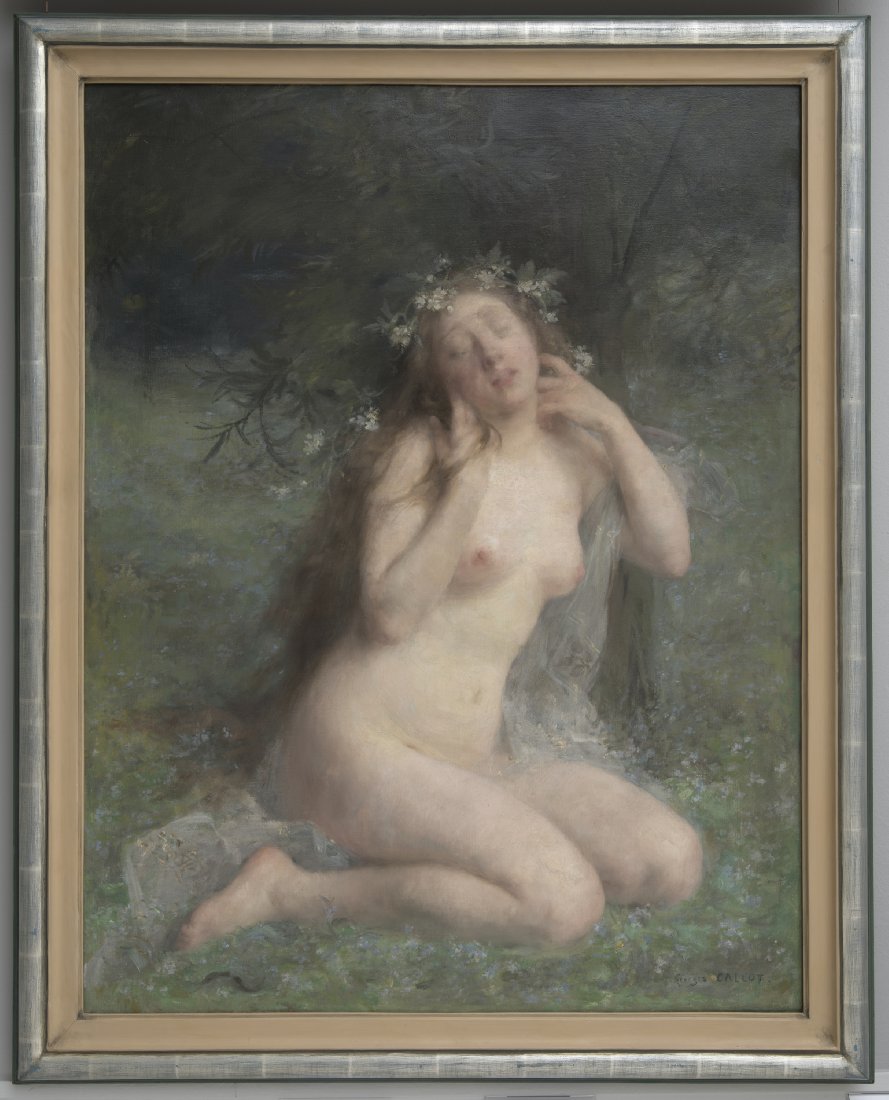Description:
The gallery presents us with Edward Alexander Raczyński’s tastes, including his sensitivity to female beauty. Thus, in its space one can admire many female nudes. Artists often reached for mythological themes to show viewers the beauty of the female body under the pretext of telling a story. This is also the case with the painting Death of Eurydice by Georges Callot (1857-1903).
Description of the painting:
According to Greek mythology, Eurydice was a hamadryad (a type of nymph that inhabited trees) and the wife of Orpheus, the king of Thrace, who was renowned for his vocal talent. As a nymph, Eurydice was very beautiful, which aroused the interest of many men. One day, as the hamadryad was strolling through a meadow, among the wildflowers in the Tempe Valley, she was seen by Aristaeus – the son of Apollo and the nymph Cyrene. He fell in love with Eurydice at first sight. However, he did not know that she was happily married to Orpheus. Aristaeus began to chase the chosen one. She, not knowing his intentions, began to run away. Unfortunately, during the chase, Eurydice was bitten by a snake, as a result of which the nymph died.
It was this moment after the bite that Callot painted on the canvas. The snake can still be seen at the feet of the dying hamadryad. The position in which the nymph is dying is stylized. The nymph is kneeling, leaning against a tree, gently pushing back her hair, which gives the painting a more sensual character.
What happened next in the story? The desperate beloved husband, Orpheus, wanted to regain his wife. So he decided to go to the underworld to plead with Hades to return his beloved to him. He had his harp and singing talent to help him. With his skills he charmed Cerberus, the three-headed dog guarding the entrance to the world of the dead, Charon, the ferryman of souls, even the Furies. When he stood before Hades, he bemoaned his misfortune, weaving his words into a moving song. Then Hades agreed that Orpheus could take Eurydice back to the world of the living, but he set one condition. Orpheus could not look back at his beloved, who was to follow him, during the whole journey back. Hermes, the divine messenger, accompanied them on their journey and had to make sure that the ban was adhered to. The couple had almost left the underworld when suddenly Orpheus, wanting to look at his wife one last time, turned back, and then everything was lost. Eurydice was taken back to Hades and Orpheus was not allowed to enter the world of the dead again.
The story of Orpheus and Eurydice, telling of a love that knows no boundaries between life and death, for which we are willing to do anything, is incredibly moving and romantic. It is no wonder that so many artists have been eager to turn to this topic.


